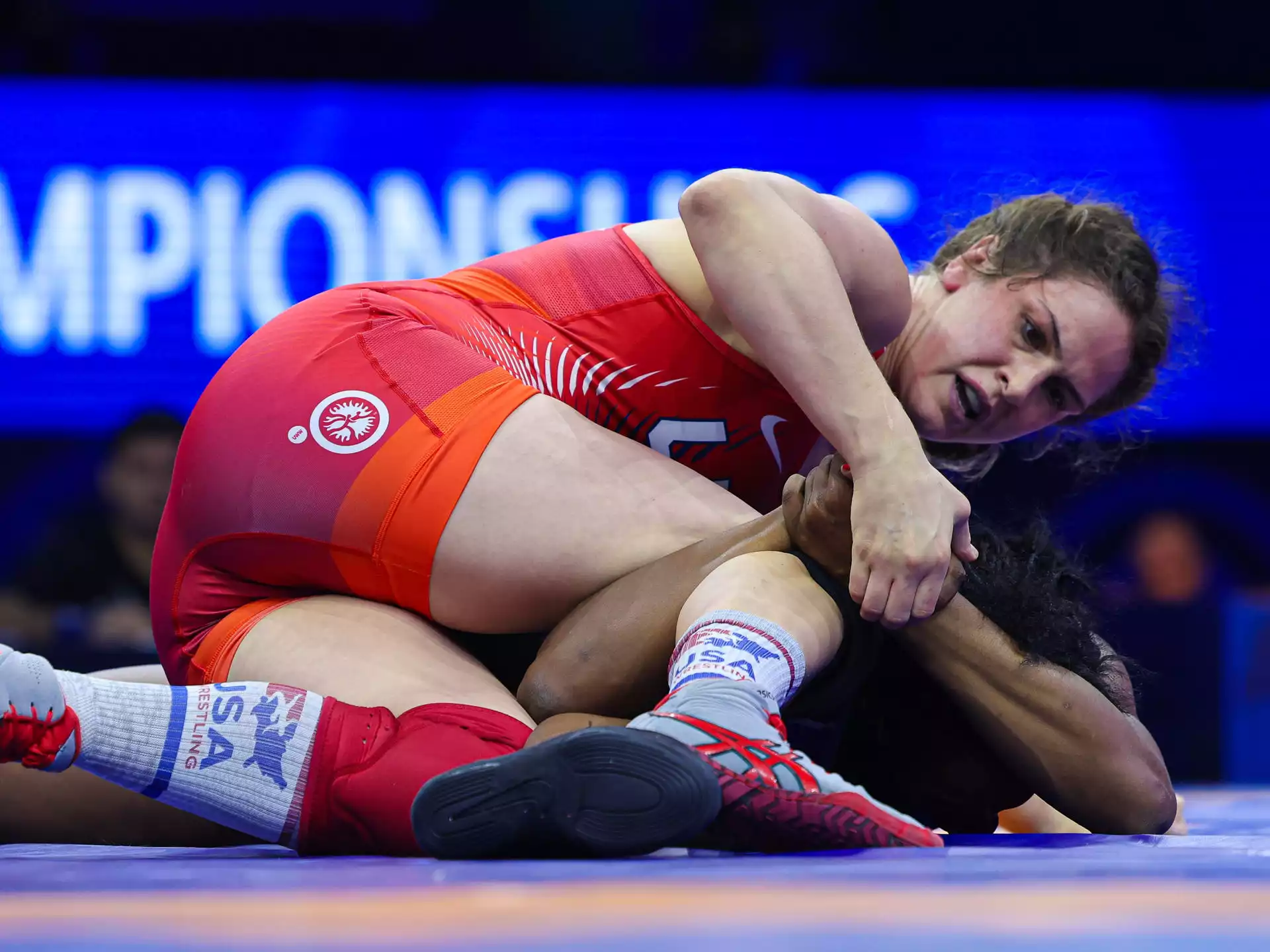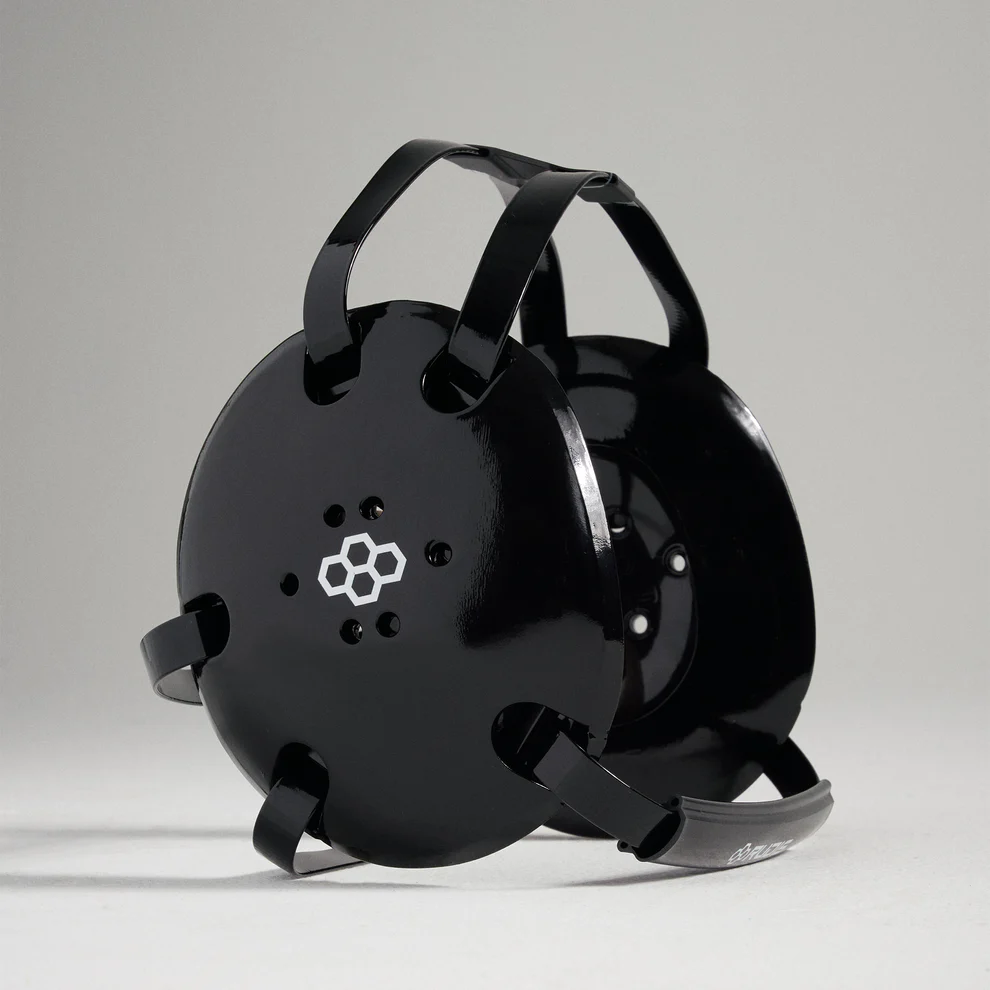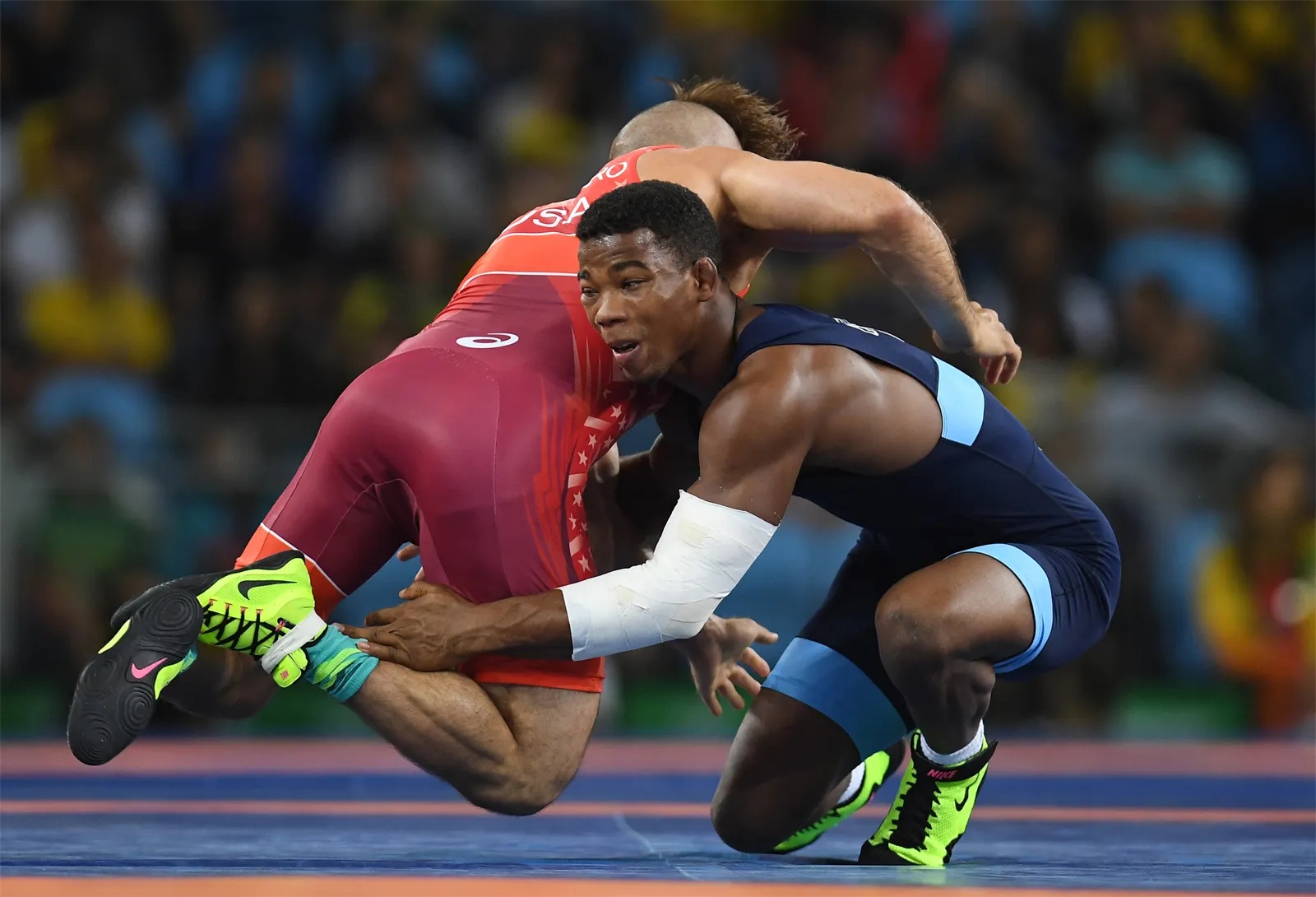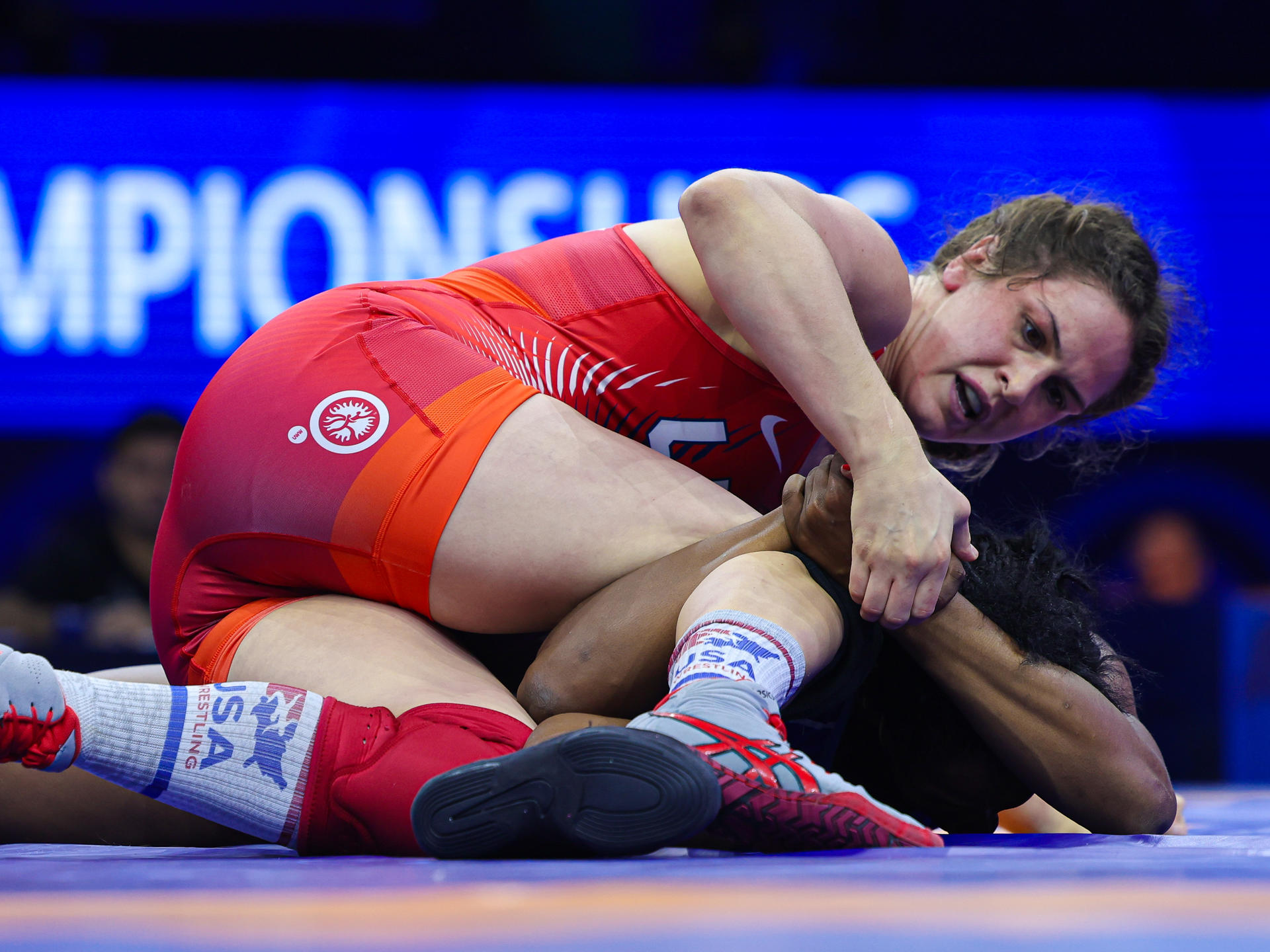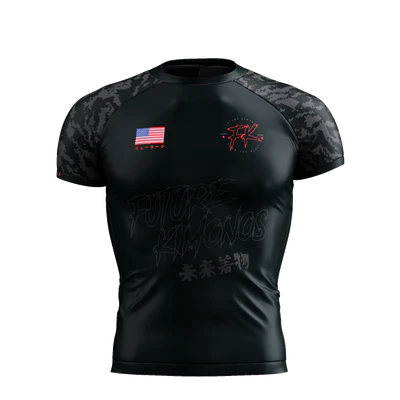Dallas Robinson
Table of Contents
If you are a Brazilian Jiu-Jitsu athlete looking to better understand martial arts as a whole, you must educate yourself on wrestling. All-on-the-feet grappling is rooted in wrestling. A basic understanding of wrestling training can be the difference between you winning close matches & losing close matches. But it can also be the difference between you being average and being elite. Let’s dive into how wrestling compares to jiu-jitsu.

Why Should I Wrestle?
There is an astounding amount of positive effects wrestling has on an athlete not just in the sport, but in life itself.
1. Wrestling builds mental strength:
Wrestling is one of if not the toughest sport on the planet. Wrestling training consists of heavy warm-ups, tough drilling, and high-paced live wrestling. Along with the physical difficulties of the sport, it is not easy to stay motivated for longer than a couple of months at a time.
The best way to get better in any combat sport is to train with people who are better than you. Although this is optimal for progression, getting beat up all the time can really kill your motivation and determination in the sport. In order to stay on top of the game during the season, it is mandatory to have a strong mind.
2. Mixed Martial Arts, Wrestling, and Jiu-Jitsu go hand in hand:
Incredibly, all grappling martial arts have some sort of connection to each other. The wrestling techniques and takedown defense that wrestling teaches can be used by MMA and BJJ fighters in their respective sports. Many modern MMA/UFC Champions such as Henry Cejudo utilize techniques taught in the art of wrestling inside the octagon. Additionally, some techniques mainly used in Brazilian Jiu-Jitsu and MMA such as taking the back can be utilized during a wrestling match in the form of Leg-Riding.
3. Wrestling strengthens physical attributes:
It is uncommon to see a wrestler who is out of shape. In order to excel in this brutal martial art, athletes must push past their physical limits, enduring repetitive, intense workouts day after day. Many wrestling clubs incorporate weight training into their practice as well, not only building their wrestler’s strength but their confidence as well. Getting into wrestling shape is an experience that is unlike any other on earth.
4.Wrestling is an incredible tool for self-defense:
Although many argue the viability of grappling in a self-defense scenario, there is no doubt that in 1 on 1 combat, a high-level wrestler will be able to neutralize 99% of the population. The sport’s gritty nature builds a strong mind and body capable of taking down threats of any size.
5. Wrestling allows you to build your confidence:
Wrestling is an incredible sport to put kids of any age into. Being comfortable in your body and knowing what you are capable of can be a huge addition to a kid’s confidence and self-esteem. Although wrestling does build confidence, there is always a better wrestler, and getting mopped in the room by a prodigy is an incredibly humbling experience.
Which sport is better for self-defense?
Explaining The Difference Between BJJ vs Wrestling
When discussing BJJ and Wrestling it is important to note & remember that while they are both based on grappling, they are entirely different sports. This is evident in the rule systems that each of them follows, the uniforms, the length of about, and even the core principles.
Rules For BJJ and Wrestling
Key Principles: Wrestling
The ultimate end goal of wrestling is to pin your opponent’s shoulders to the ground to end the match immediately, “pinning” him.
Wrestlers look to engage on their feet, attack their opponent’s legs and score a takedown. From there they establish control in the “top position” & depending on the style of wrestling they go for various turns to expose their opponents back to the mat.
Each exposure brings points in for the offensive wrestler. In Freestyle/Greco-Roman the shoulders/back only need to break 90 degrees for points to be awarded. But in Folkstyle wrestling, the shoulders/back need to break 45 degrees and be held there for two or four seconds, each interval awarding a different amount of points.
The bottom guy in wrestling looks to either reverse his opponent, meaning he ends up in the top position. Or he looks to get up to his feet and escape to return to the standing “neutral” position.
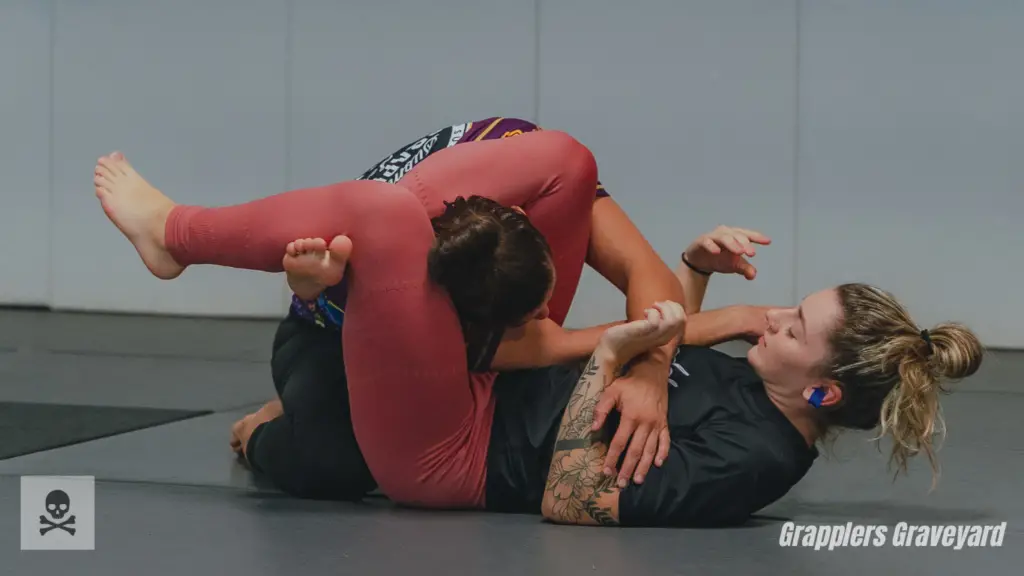
Key Principles: Brazilian Jiu-Jitsu
In BJJ the principles are different. As you likely know, in BJJ we have the ability to perform submissions & breaks.
We look to put our opponent into a position where we can get to a choke or put a limb of our opponent into a position where we can go against the joint to get them to tap.
In BJJ you also have the freedom of pulling guard/working through various guard positions. So your back is exposed. This is FUNDAMENTALLY different from wrestling in that you would be giving up points in wrestling for doing the same.
While they both have a lot of positions to be aware of, from my perspective BJJ has more positions & sequences to learn. Handfuls of different guards, mounts, back takes, etc.

Wrestling vs Jiu-jitsu: Choose Your Form of Combat
Your aim as a martial artist should be pointed toward well-roundedness. With that being said, unless you are a HIGH-LEVEL wrestler (think: Olympic level) there are very few opportunities to actively compete in wrestling.
This is primarily because wrestling in the United States follows a pretty cut-and-dry pipeline.
High school wrestlers aim to wrestle in college, if they are very successful in college they then move on to the international styles of Freestyle & Greco – Roman. Unlike BJJ, there is not a wide array of opportunities to compete for those without a wrestling background.
So for most grapplers, the option to train and compete is in BJJ. You do not see BJJ fighters that did not wrestle in High School/College take up wrestling and compete after the fact.
The reason for this is that there is a WIDE skill gap between those who are at the elite level and actively competing and literally anyone else that would want to compete. The NCAA ran statistics on the percentage of wrestlers that make it from High School to college. To get a better gauge of how elite this feat is, check this out.
Our pick on the best wrestling headgear to wear this upcoming wrestling season
Rules For Wrestling
The rules for wrestling differ greatly from BJJ. It is also dependent on the style. So in the essence of keeping it simple & to the point, this is what you should consider:
Wrestling starts on the feet working for a takedown. Upon securing a takedown, 2 points are awarded for that takedown. Wrestlers then have the opportunity to turn their opponents back to the mat for “exposure” points. If they come back up to their feet in Folkstyle, a point is awarded to the escaping wrestler. In Freestyle & Greco-Roman after 15 seconds of turning attempt, the athletes are brought back to their feet by a whistle. No escape point is awarded.
In Freestyle & Greco-Roman athletes are allowed to “lock hands” on top in an attempt to turn. In Folkstyle, however, this is not allowed and is called a “body lock”.
The ultimate goal in wrestling is to pin your opponent’s shoulders to the ground to end the match.
College Folkstyle matches are timed like so: Three minutes first period, two-minute second period, two-minute third period. In Freestyle & Greco-Roman the bout is timed as so: Two three-minute periods totaling a six-minute match.
To learn more about the differences between the rules of Folkstyle and Freestyle, check out this video.
Our pick on the top 10 wrestling shoes for this upcoming wrestling season
Does Wrestling have a ranking system like BJJ?
There are various ranking systems used in wrestling depending on which style you are talking about. In Folkstyle wrestling, you can find rankings on sites like Intermat and Flowrestling.
For Freestyle & Greco-Roman wrestling you can find rankings by going on the UWW website.
Oftentimes, the top 20-30 wrestlers in each weight class are ranked. There is also a Pound for Pound ranking as well for college Folkstyle wrestling and Flowrestling will also do Pound for Pound rankings for the international styles of Freestyle & Greco-Roman!
If you wanted to find rankings for Freestyle and Greco-Roman you can find them on this site.
Similarities between BJJ vs Wrestling
The greatest similarity between BJJ and Wrestling lies in the fact that they are both rooted in grappling. As opposed to say Boxing or Muay Thai which is a striking sport.
In wrestling and BJJ, you start on your feet, when grappling on your feet you are working to score a takedown. After scoring a takedown you work to establish control. This is the main similarity honestly.
Feet wrestling and various positions that the two share (like back taking for example).
Which one is more effective?
Personally, I would say both are nearly equally effective in a self-defense setting. Though I would give a slight edge to wrestling. I say this because in a self-defense setting on your feet, you could go for a takedown, but would you go for an inversion to defend yourself?
After the fight goes to the ground though, the skills you build in BJJ in terms of holding someone down, like in mount, are very useful.
As always, for self-defense, the greatest defense is to not get into a fight at all. This is not always possible though and sometimes we are put into a situation where we have no choice but to fight.
Both wrestling & BJJ will help you in this setting and could save your life. You need to determine for yourself what is useful and what is actually realistic to use to defend yourself!

The guys competing “professionally” in wrestling are in the top .01% of wrestlers on the entire planet. They have been wrestling for well over 16+ years more often than not.
It is also important to consider the different ranking systems in BJJ & wrestling. BJJ offers the belt system, which ensures that the people you will be competing against will be of similar skill & experience level as you. Wrestling does not have a system like this. In a wrestling tournament, say there are 16 guys in the bracket. Those 16 guys are likely all HAMMERS. So, if you do not have an extensive wrestling background, you will very unlikely do well at the tournament.
With all that being said, there are a few opportunities for grapplers that are not traditionally wrestlers to compete. Depending on your location, you can find local tournaments that have an “open division” and compete in it. These will be in Freestyle & Greco-Roman for style.
There is also the “veterans division” for wrestlers between the ages of 35-70. The level of competition will vary. Some people in the bracket will be studs, others will just be older people that love wrestling and want to compete. You can get more information on the Veterans Division here!
In the past few years, we have seen a few examples of former Senior Level (Olympic) wrestlers competing in the veteran’s division. Most notable would be Reece Humphrey. He was a multiple-time World Team Member for the United States in Freestyle, and his long list of accolades includes a fifth place at the world championships in 2014. He was also a two-time All-American for Ohio State (2nd place, 3rd place).
So even in the Veterans division, there is a chance that the level of competition could be ridiculously high.
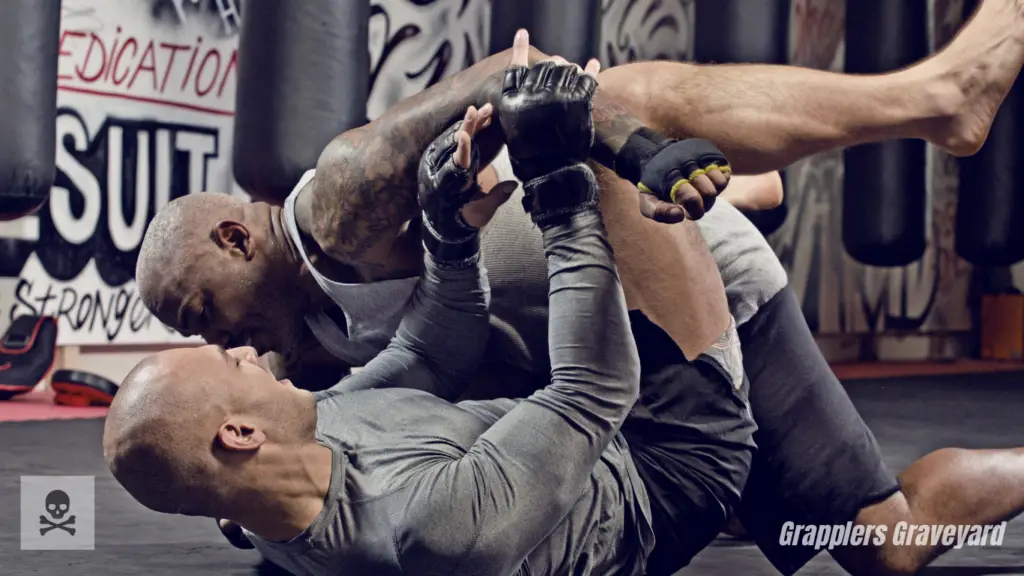
Benefits of Doing Both BJJ and Wrestling
Technique Crosses Over:
It is incredible how much technique crosses between these two martial arts. As stated previously, grappling techniques taught in the dojo can positively affect your game on the wrestling mats and vice-versa.
Cross Training Rounds Out Your Game:
Techniques such as takedowns, takedown defense, mat positioning, and spacial awareness, are all skills that can only be fully utilized when a grappler has cross-trained between martial arts.
Jiu-Jitsu and Wrestling are both combat sports that are useful in many scenarios. They are great ways to get in shape, learn discipline, and defend yourself in bad situations. A grappler who masters both of these sports is surely a force to be reckoned with.
Find top-rated rash guards here

